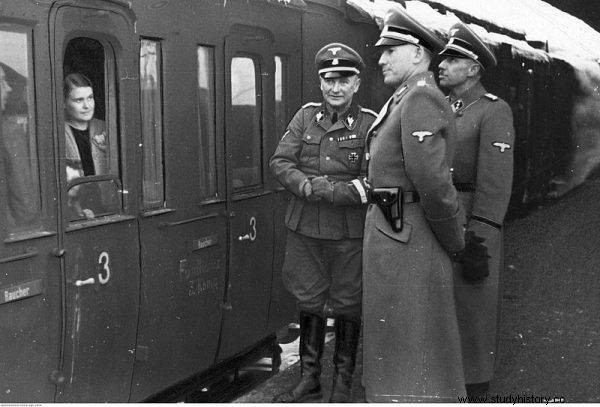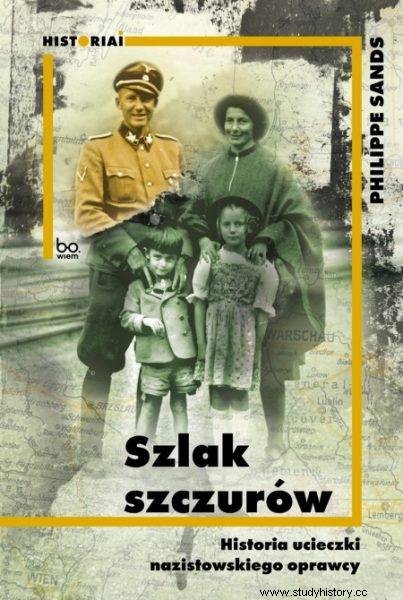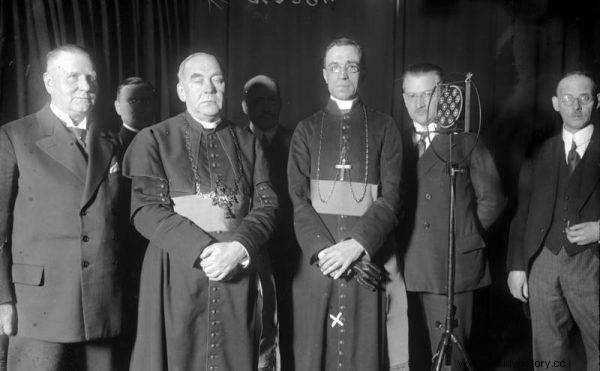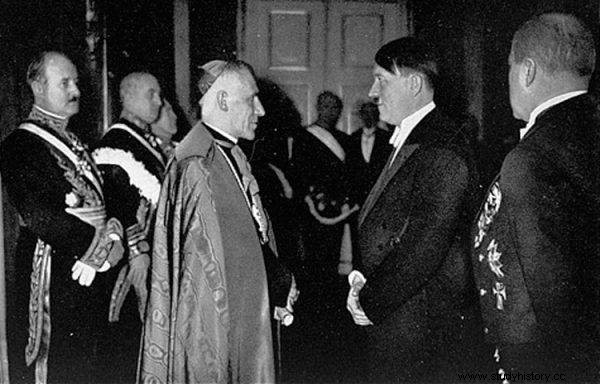After the war, thousands of Nazi criminals escaped justice by escaping to South America, the so-called on the trail of the rats. The Vatican helped them.
Of the approximately 13 million former Nazis identified by the Allies after World War II in West Germany, by 1949 ... three hundred were imprisoned. Most of those who were charged at all have received fines, confiscation of property they have appropriated or banned from holding public office. Among the punished, many leading Nazis were missing, including Dr. Mengele, Adolf Eichmann, Franz Stangl, the commandant of Sobibór and Treblinka, and Otto Wächter, the governor of the Galicia district, who established the ghetto in Krakow.
What happened to them? Some - like Joseph Goebbels - have committed suicide to avoid responsibility for their crimes. Others, like Mengele, lived to a peaceful old age in South America. They fled from the Russians and Americans hunting them thanks to… the help of the Vatican.
The Great Escape
"We knew so generally that the Vatican sympathized with fascism that certain elements from the Vatican were involved in directing these exfiltration operations, these rat trails," said David Cornwell (known as John le Carré), a British writer who was an MI6 agent in his youth. According to him to South America - often thanks to the support of the Catholic Church - as many as 10,000 Nazis "emigrated" after the war! As described by Philippe Sands in the book The Rat Trail. The story of the escape of the Nazi torturer :
The Vatican was a useful ally, "skillful" in recruiting, inverting, and exporting former National Socialists. (...) the beaten path was followed:"destroy his files or take them out of circulation or replace them with false ones, or conduct some kind of theoretical interrogation and push him through the system". The Germans had their own name for it:Persilschein , a reference to the name of the washing powder that made the laundry whiter than white.

Otto Wächter, whose complicated fate is described in his book Sands, also tried to get through the "rat trail" to Argentina
Otto Wächter, whose complicated fate is described in his book Sands, also tried to get to Argentina on the "rat trail". Prosecuted for mass crimes against over 100,000 Poles, he hid in the Alps and then crossed the mountains to Italy. Ultimately, he failed. He died in Rome under mysterious circumstances. However, many of his tormentors took advantage of the helping hand the Church extended to them.
Rat trail
Daniel Stahl, a historian at Friedrich Schiller University in Jena, explains:“The Rat Line was not an ordered system but consisted of many individual components. It was a rather spontaneous collaboration of various institutions which step by step was sanctioned after the Second World War ”.
Which way was the escape route? Ninety percent of the criminals entered Italy via the Alps . The first "stop" was a monastery in Merano, Brixen or Bolzano in South Tyrol. It happened that the exnauts hid there for several years. During this time, they were collecting money to continue their journey across the ocean. Another must-see on the way was Rome. There, the refugees received documents from the Catholic Church confirming their - obviously falsified - identity.

The text was created, among others based on the book by Philippe Sands' The Rat Trail. The story of the escape of the Nazi torturer ", which has just been published by the Publishing House of the Jagiellonian University.
Obtaining a Red Cross passport on the basis of this letter was merely a formality. It is estimated that around 120,000 such passports were issued by 1951 . And yet, as we read in The Rat Trail Sandsa:"The best way to get away was with a tourist visa, a Red Cross passport and cash (" about 150,000 lire ").
"So-called War Criminals"
Among the church dignitaries who eagerly helped the Nazis to avoid justice, the name of Bishop Alois Hudal is most often mentioned. This clergyman of Austrian origin was a doctor of theology. He lectured at the University of Graz, and from 1923 he was the rector of Rome Anima. He never hid his pro-Nazi views. In fact, when Adolf Hitler took power, he publicly announced:"I welcome the new German Reich, whose philosophy combines Christian and national values."

Even 10,000 Nazis "emigrated" to South America - often thanks to the support of the Catholic Church - after the war!
According to Professor Gerald Steinacher, the bishop was a German nationalist with National Socialist sympathies, guided by "Christian anti-Semitism." Contrary to what the defenders of Hudal said - that he did not realize who he was helping, because he was in a hurry to save everyone, the bishop knew perfectly well who would start a new life overseas thanks to him. He consciously hindered the work of the judiciary. The best proof of this is ... his own words. In the diaries published 13 years after Hudal's death, we can read:
The Allied war against Germany was not a crusade, but only a struggle of economic powers fighting for economic victory. This so-called business used slogans like democracy, race, religious freedom, and Christian values for the sake of the masses. All this meant that after 1945 I felt an obligation to devote all my charity work mainly to the former National Socialists, fascists and so-called war criminals.
Hudal's list
Hudal went even further - he called the Nazis "heroes defending Europe against Bolshevism." And he was echoed by ... the Americans. They had a hidden interest in it anyway. Philippe Sands in the book Rat Trail. The story of the escape of the Nazi torturer writes:
In 1949, the American and British interest in pursuing the National Socialists was dying out, and the new goal was to use the more valuable , getting them out of Europe, perhaps to the US or undercover to South America. The Americans knew about the rat trail, and maybe they helped create it.

Indirectly, Pope Pius XII was also indirectly accused of supporting the Nazis - for not wanting to condemn the Holocaust in public
On the long list of Nazis who got to South America, there are the worst criminals of World War II:Adolf Eichmann (organizer of the Holocaust), Josef Mengele ("Angel of Death" from Auschwitz), Klaus Barbie (head of the Gestapo, "butcher from Lyon), Walther Rauff (inventor of "gas trucks" in which Jews were murdered), Franz Stangl (commandant of Sobibór and Treblinka) or Eduard Roschmann (responsible for the murder of Latvian Jews).
As early as 1946, American intelligence identified at least 20 Vatican-related organizations that helped the Nazis escape . Bishop Hudal was associated with most of them. He too - like the criminals he "saved" - avoided responsibility for his actions. Although he had lost his post as the chancellor of the Anima seminary, he was not affected by any other consequences. After all, this is what "true Christians" should do, according to Hudal himself. As he said:"We do not accept the Jewish principle of an eye for an eye" ...
